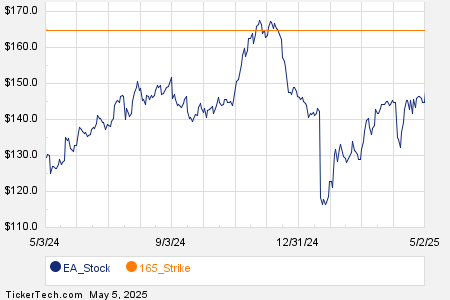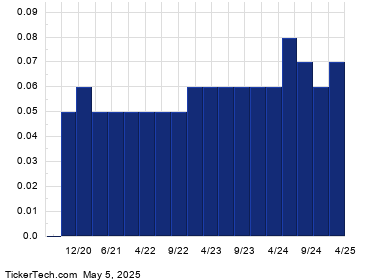Significant Decline in Cocoa Prices Amid Improved Crop Conditions
July ICE NY cocoa (CCN25) has fallen by -406 (-4.57%) today. Meanwhile, July ICE London cocoa #7 (CAN25) is not trading today due to market closures in the UK for the May Day holiday.
Weather Boosting Cocoa Crop Production
Cocoa prices are sharply declining, driven by improved weather conditions in West Africa, particularly in the Ivory Coast and Ghana, the world’s two largest cocoa producers. Farmers in the Ivory Coast report that “cocoa trees continue to re-flower, and the cherelles are becoming pods.” In Ghana, recent rains have positively impacted crop conditions.
Demand Concerns Weighing on Market
Last Wednesday, cocoa prices reached two-week lows due to demand worries. Hershey Co. reported a -14% drop in Q1 sales, forecasting $15-$20 million in tariff costs for Q2. This increase in costs likely will raise chocolate prices and dampen consumer demand. Similarly, Mondelez International reported weaker-than-expected Q1 sales, noting that consumers are cutting back on snack purchases amid economic uncertainty and high chocolate prices.
Rising Cocoa Inventories and Global Export Dynamics
Current cocoa inventory levels are bearish for prices. Following a drop to a 21-year low of 1,263,493 bags on January 24, ICE-monitored cocoa inventories in U.S. ports have increased to a seven-month high of 2,076,132 bags as of last Friday. Additionally, a report indicated a +24% year-over-year increase in Nigerian March cocoa exports to 27,564 metric tons. Nigeria ranks as the world’s fifth-largest cocoa producer.
Quality Issues in Mid-Crop Harvest
Concerns regarding the quality of Ivory Coast’s mid-crop may limit the decline in cocoa prices in the near term. Cocoa processors have raised alarms about quality issues, rejecting truckloads of cocoa beans. They report that about 5% to 6% of the current crop is of poor quality, compared to just 1% during the main crop season.
Supply Fluctuations and Shipment Data
On April 25, NY cocoa climbed to a two-and-a-half month high amidst supply concerns caused by a slowdown in Ivory Coast cocoa exports. Government data reveals that farmers have shipped 1.53 million metric tons of cocoa from October 1 to May 3 this marketing year, an 11.7% increase from last year but below a previously larger +35% increase recorded in December.
Mixed Signals from Global Grindings
Recent news regarding better-than-expected global cocoa demand has also contributed to market dynamics. North American cocoa grindings fell -2.5% year-over-year to 110,278 metric tons, exceeding expectations for a sharper drop of at least -5%. Furthermore, Q1 European cocoa grindings decreased -3.7% year-over-year to 353,522 metric tons, and Q1 Asian cocoa grinding saw a -3.4% decrease to 213,898 metric tons, also a smaller decline than anticipated.
Concerns About Mid-Crop and Future Production
Concerns surrounding the upcoming mid-crop in the Ivory Coast are contributing to cocoa price stability. Rabobank indicates that late-arriving rains limited crop growth. The mid-crop, which typically begins in April, is projected to yield around 400,000 metric tons, representing a 9% decrease from last year’s 440,000 metric tons.
Global Trade Tensions Impacting Demand
Escalating global trade tensions and rising tariffs could lead to reduced consumer demand for cocoa products. On April 10, Barry Callebaut AG, one of the largest chocolate manufacturers globally, revised its annual sales guidance downward due to concerns over high cocoa prices and tariff uncertainties.
Surplus Predictions and Inventory Ratios
The International Cocoa Organization (ICCO) has projected a global cocoa surplus of 142,000 metric tons for 2024/25, marking the first surplus in four years. The ICCO also anticipates a 7.8% year-over-year increase in global cocoa production to 4.84 million metric tons.
Supportive Factors from Ghana’s Production Cut
Reduced cocoa supplies from Ghana, the world’s second-largest producer, could provide price support. Cocobod, Ghana’s cocoa regulatory body, has downgraded its 2024/25 cocoa harvest forecast for the second time this season to 617,500 metric tons, down 5% from an initial estimate of 650,000 metric tons.
Historical Deficits in Cocoa Production
The ICCO asserts that the global cocoa deficit for 2023/24 reached -441,000 metric tons, marking the largest deficit in over 60 years. Production for the same period declined by -13.1% year-over-year to 4.380 million metric tons. Furthermore, the 2023/24 global cocoa stocks/grindings ratio stands at 27.0%, a 46-year low.
On the date of publication, Rich Asplund did not have (either directly or indirectly) positions in any of the securities mentioned in this article. All information and data in this article is solely for informational purposes. For more information please view the Barchart Disclosure Policy.
here.
The views and opinions expressed herein are the views and opinions of the author and do not necessarily reflect those of Nasdaq, Inc.

